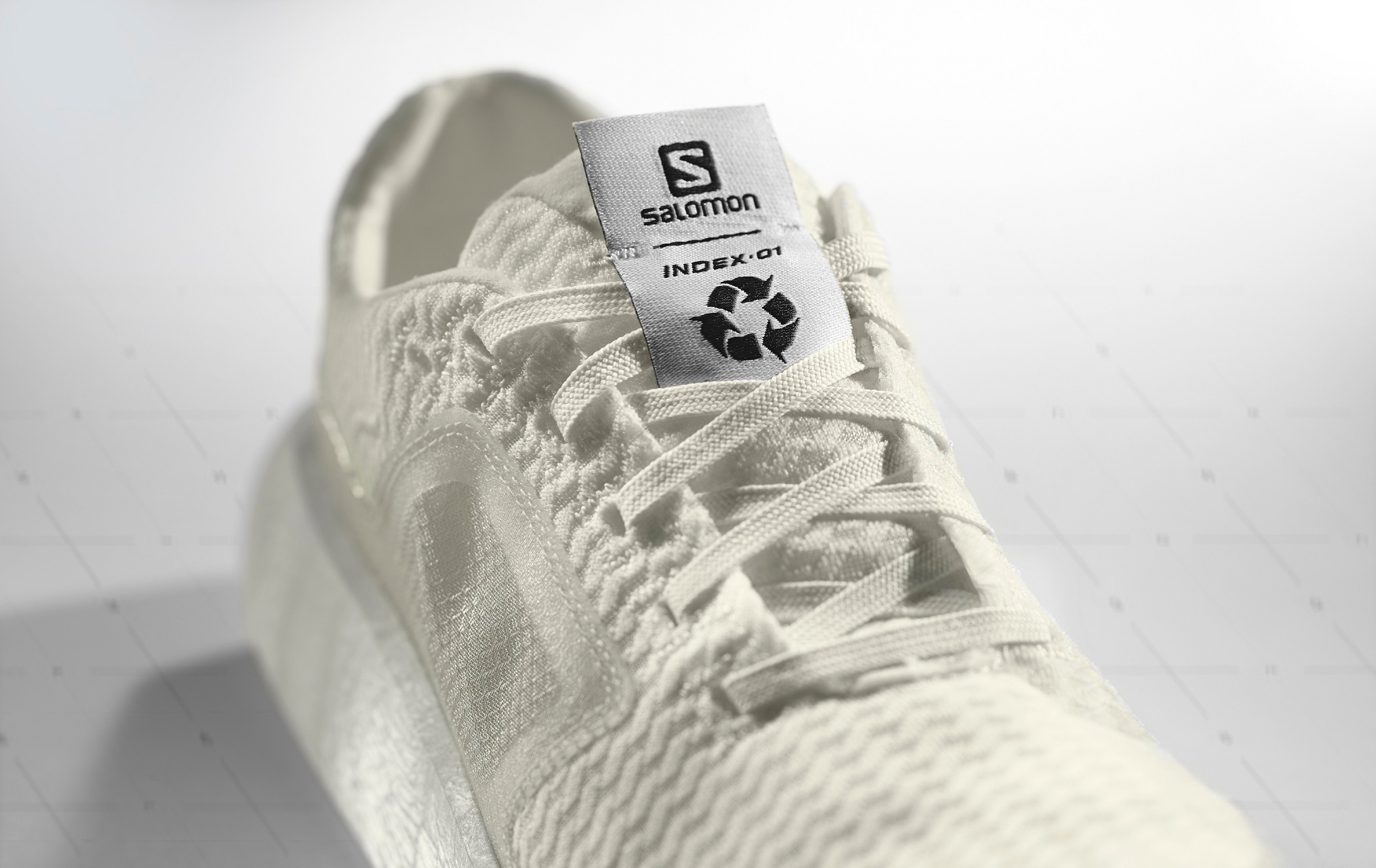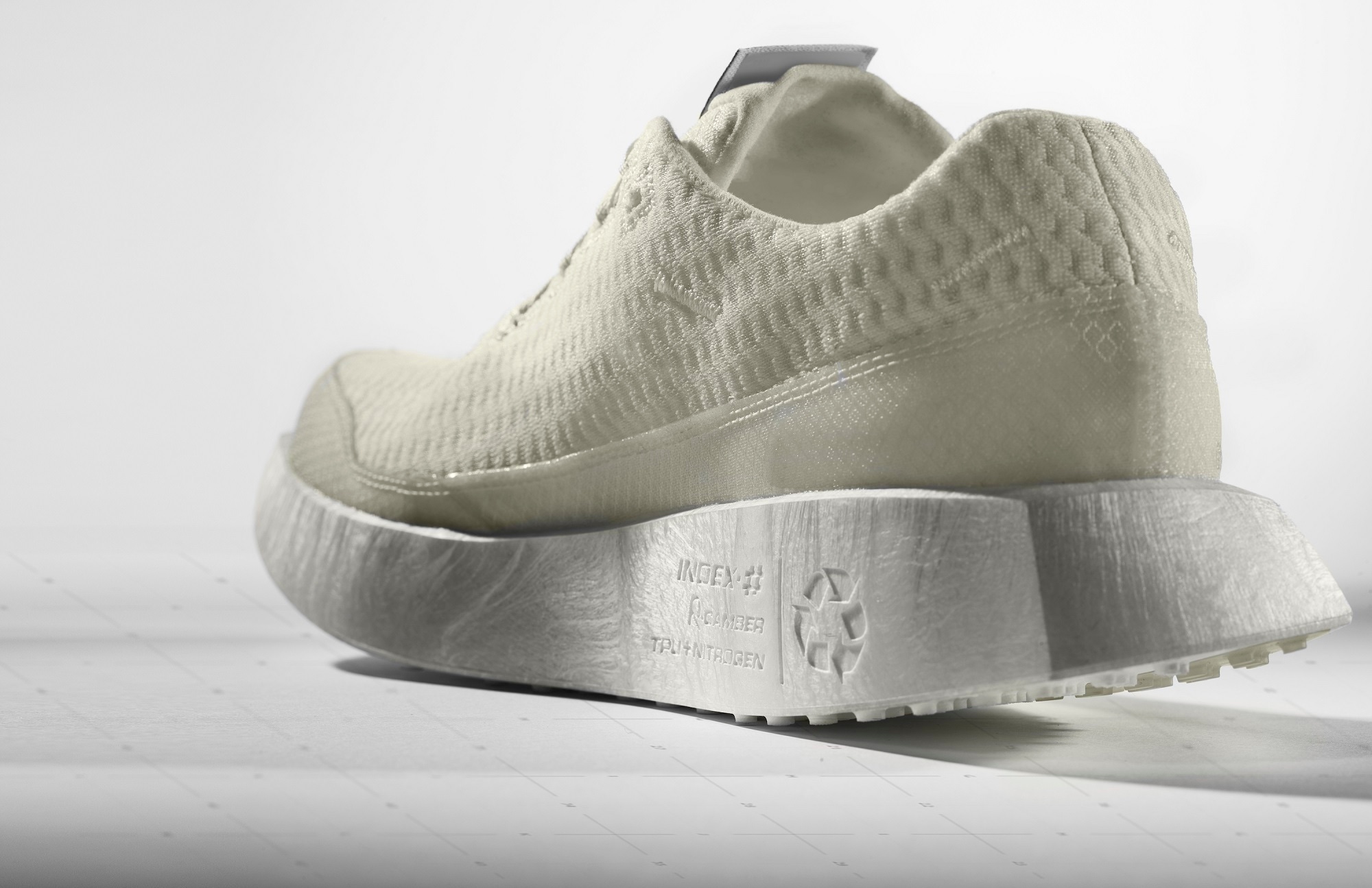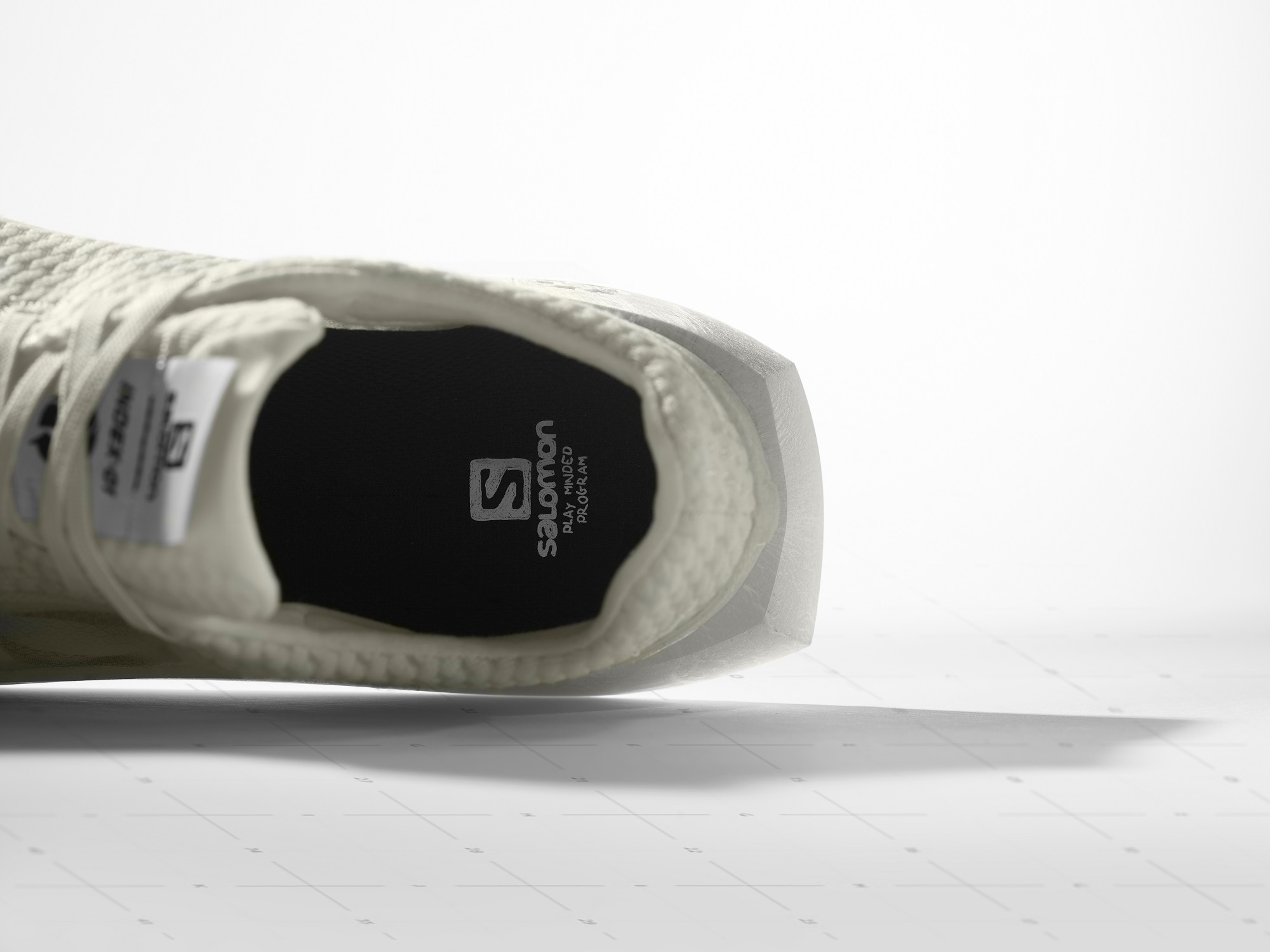“Shoes are a very complex product to recycle because they generally mix so many materials: leather, EVA, rubber, TPU, polyester, polyamide,” explains Olivier Mouzin, Manager of Salomon’s Footwear Sustainability Program. “And because there isn’t really a way to separate all those materials at the end of the shoe’s life, the shoes often end up in a landfill or burned.”
That was the complex challenge facing Mouzin and the members of Salomon’s footwear development team when they set out to create an all-around running shoe that performed on the roads, and could later be recycled and used to create future products.
Now, after three years of research and development, the recyclable Index.01 running shoe is a reality, and will be available for purchase in the Spring of 2021.
Get notified when the Index.01 Recyclable Running Shoe is available:
REGISTER

DESIGNING SOLUTIONS
To understand how the futuristic Index.01 came to exist, it’s important to first look to the past.
In late 2019, Salomon unveiled a concept shoe that was made completely from thermoplastic polyurethane (TPU). The idea was that the entire shoe could be ground into tiny pieces at the end of its life, then used in the creation of a Salomon alpine ski boot. The concept shoe was an encouraging initial step, but Mouzin and the Salomon footwear development team knew it would never pass the rigid durability requirements required of all Salomon footwear.
“To create the Index.01, we had to construct a shoe using only two materials that could later be separated and recycled,” says Mouzin. “And, just as importantly, we had to be sure those materials would allow us to construct a shoe that passes our standards for every day road running in terms of fit, performance and durability.”

First, they set out to find a material for the bottom unit of the Index.01 that was both recyclable and that could deliver the perfect amount of shock absorption and rebound needed for road running. The answer is a nitrogen-infused, TPU-based foam called INFINIRIDE, which can be ground into tiny pieces and recycled when the shoe reaches the end of its life.
Performance-wise, the INFINIRIDE bottom unit is built with R.Camber (rocker) geometry, which helps propel the runner forward with a quick transition so he/she spends less time on the ground.
To ensure comfort, the team used recycled polyester to create the shoe’s upper. The combination of the polyester upper and the thermoplastic polyurethane (TPU) bottom unit meant that both parts of the Index.01 could be recycled when the user was finished with his/her shoes. That meant the shoe needed to be constructed so that it could be easily disassembled at the end of its life.
To make that possible, the thread used to stitch together the upper and bottom unit is also polyester, allowing it to be part of the recycled upper materials. A water-based glue is used to connect the bottom unit and the upper in order to minimize material contamination.
To begin the recycling process, the recycled insole is removed and then the upper and bottom units are separated. Once separated, the two pieces will be ground down separately into tiny pellets. The materials of the bottom unit that are recycled in Europe will be combined with virgin TPU to make Salomon alpine ski boots in Europe for the 2022 winter range. They will be used to create other products in the other regions of the world so they are not transported. The polyester upper will also be ground down, then turned into yarn and used to weave a fabric. The recycling partners and specific second-life use of the materials in each region are currently being finalized.

RECYCLING THE INDEX.01
While they were busy “solving” the problem of building a recyclable shoe, Salomon’s footwear team also had to tackle the issue of how to actually collect the used Index.01s for recycling when they were done being used by consumers.
Recycling any product is, of course, dependent on the end-user playing his/her part. In this case, that means the person wearing the shoes. So, the next challenge was creating a process for collecting the shoes in the most environmentally-friendly manner possible, and to make that process easy enough that consumers will be willing to play their role in starting the process with their used shoes.
To launch the recycling process, Index.01 owners can simply visit Salomon.com and print a shipping label to send the shoes to the closest collection center free of charge. (More details will be available on Salomon.com as the shoe nears its February 2021 availability day.) From there, the shoes will begin their journey towards a second life.
To minimize transportation impact, the shoes will be received at collection centers in each of Europe, North America and the Asia/Pacific regions. There, they will be washed and disassembled before each material is sent for recycling locally.
“It’s important to be sustainably consistent in collecting the shoes at the end of their life,” Mouzin says. “We don’t want them to travel all over the planet. That’s why, as a first step, we set up collection centers in each region. From there, we also had to find recycling partners to recycle the used shoe materials locally. Salomon can recycle TPU in Europe and in partnership with our factories in Asia, but we had to find solutions for polyester and for the TPU in North America.”

To lessen the material waste associated with the Index.01, there will be no stuffing paper used inside the shoes and no extra hangtags. In fact, starting with the Spring 2021 season, all Salomon footwear will use FSC certified packaging. The environmental impact of all Salomon footwear packaging was drastically reduced in 2017, when glue and water-based ink were eliminated and the amount of cardboard was reduced.
How the footwear industry will progress in the area of sustainability is in both the short-term and long-term is an exciting prospect. At Salomon, the next step is to simplify the separability of the two materials in the Index.01 and ensure that the product return process has the lowest environmental impact possible.
“ We know that we can’t have a classic collecting system if we want to keep the materials as virgin as possible in order to recycle them into new products,” Mouzin says.
He is also hopeful that more big footwear brands will help progress the industry overall. A number of shoe brands have begun to use recycled material to create their products and, while Mouzin says this is an encouraging step, he’s excited to see how the industry advances in the short term and over the coming years.
“Some brands are now downcycling shoes—which means mixing all the materials—into things like the synthetic turf used to make sports fields,” Mouzin explains. “We see more and more shoe start-ups offering a shoe return in order to recycle the material. I hope we will see more of such initiatives even from big brands because only the brands that make the product know what’s in it.”
Months ago, when plans for the Index.01 shoe were unveiled at an internal gathering of Salomon employees, the audience spontaneously burst into applause. It was clear that inside the company’s walls, creating sustainable products like the Index.01 is a mission that people are passionate about. Salomon president Michael White says this is indicative of the desires of the outdoor enthusiasts as well.
“The internal enthusiasm for the Index.01 reflects what we hear from our loyal community of outdoor lovers as well—that they are eager for brands like Salomon to find more sustainable ways to develop products,” White says. “Designing a recyclable running shoe that meets the level of performance people expect from Salomon is something we are proud of. It will be exciting to see what we learn from this process and how it shapes future innovation.”














